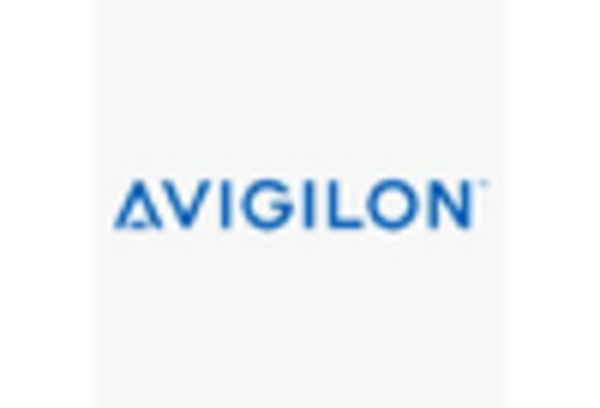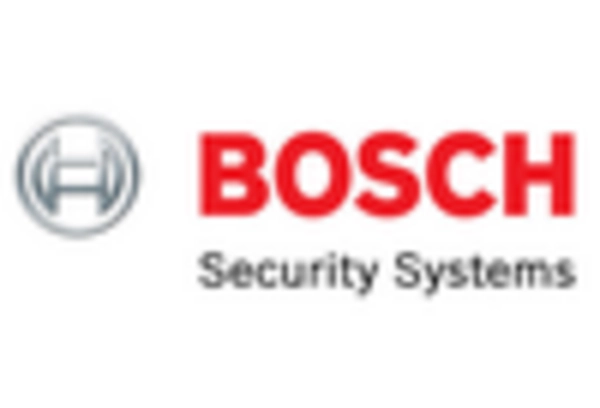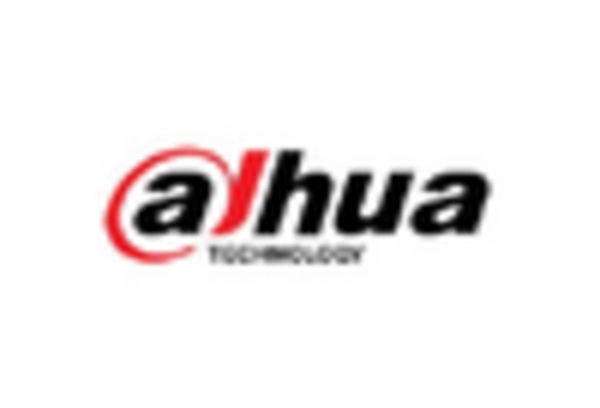Rising Security Concerns
Rising security concerns across various sectors are propelling the video surveillance-as-a-service market in South America. With increasing incidents of crime and vandalism, both businesses and individuals are prioritizing security measures. This heightened awareness has led to a surge in demand for advanced surveillance solutions that can provide real-time monitoring and rapid response capabilities. Reports suggest that the security services market in South America is expected to grow by approximately 20% in the coming years, with video surveillance-as-a-service playing a crucial role in this expansion. The ability to integrate with other security systems and provide analytics further enhances the value proposition of these services. As safety becomes a paramount concern, the adoption of video surveillance-as-a-service is likely to continue its upward trajectory, addressing the evolving needs of consumers and businesses alike.
Growing Demand for Remote Monitoring
The increasing need for remote monitoring solutions is a key driver in the video surveillance-as-a-service market in South America. Businesses and residential users are seeking ways to enhance security without the need for extensive on-site infrastructure. This trend is evidenced by a reported growth of approximately 25% in demand for remote surveillance services over the past year. The convenience of accessing live feeds and recorded footage from anywhere via mobile devices is appealing to many users. As urbanization continues to rise, the necessity for effective surveillance solutions becomes more pronounced, leading to a greater reliance on video surveillance-as-a-service offerings. This shift not only improves security but also reduces operational costs associated with traditional surveillance systems, making it an attractive option for various sectors, including retail, banking, and residential properties.
Cost-Effectiveness of Subscription Models
The cost-effectiveness of subscription-based models is significantly influencing the video surveillance-as-a-service market in South America. Organizations are increasingly opting for these models as they eliminate the need for hefty upfront investments in hardware and software. Instead, users can pay a manageable monthly fee, which often includes maintenance and updates. This approach is particularly beneficial for small to medium-sized enterprises that may lack the capital for extensive security systems. Recent data indicates that subscription services have seen a growth rate of around 30% in the region, as businesses recognize the financial flexibility and scalability these services offer. Furthermore, the ability to easily upgrade or scale services according to changing needs enhances the appeal of video surveillance-as-a-service, making it a viable option for a diverse range of customers.
Technological Advancements in Surveillance
Technological advancements are significantly shaping the video surveillance-as-a-service market in South America. Innovations such as artificial intelligence, machine learning, and cloud computing are enhancing the capabilities of surveillance systems. These technologies enable features like facial recognition, motion detection, and automated alerts, which are increasingly sought after by users. The integration of these advanced technologies is expected to drive market growth, with projections indicating a potential increase of 35% in the adoption of AI-driven surveillance solutions over the next few years. As organizations strive to improve their security measures, the demand for sophisticated video surveillance-as-a-service offerings that leverage these technologies is likely to rise. This trend not only improves security outcomes but also provides valuable insights through data analytics, further solidifying the role of video surveillance-as-a-service in modern security strategies.
Increased Focus on Compliance and Standards
An increased focus on compliance and standards is emerging as a significant driver in the video surveillance-as-a-service market in South America. Regulatory requirements regarding data protection and privacy are becoming more stringent, compelling organizations to adopt solutions that ensure compliance. Video surveillance-as-a-service providers are responding by offering services that align with these regulations, thereby enhancing their market appeal. Recent legislative changes have prompted businesses to reassess their security strategies, leading to a projected growth of 15% in the adoption of compliant surveillance solutions. This trend is particularly relevant for sectors such as finance and healthcare, where data security is paramount. By integrating compliance features into their offerings, video surveillance-as-a-service providers can not only meet regulatory demands but also build trust with their clients, fostering long-term relationships and driving market growth.


















Leave a Comment